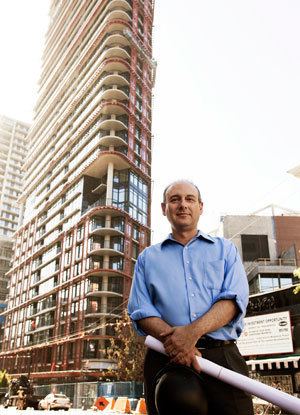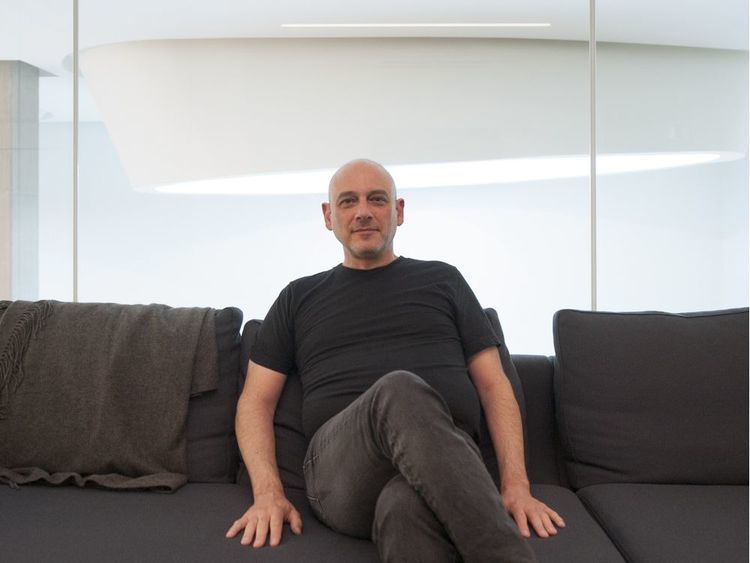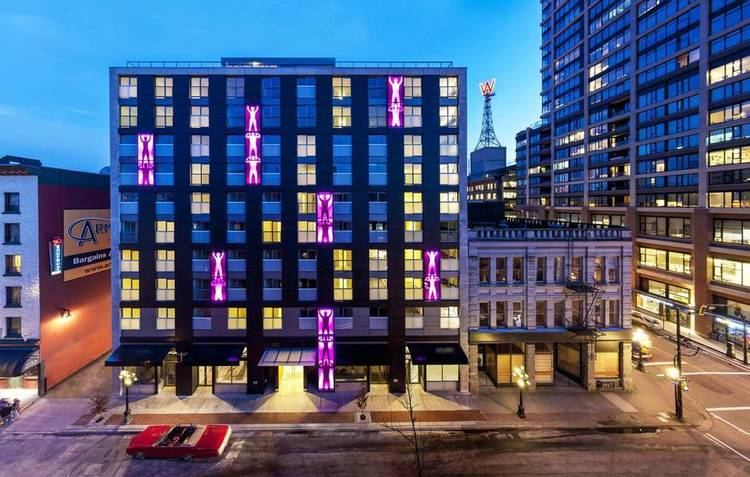Nationality Canadian | Occupation Architect Name Gregory Henriquez | |
 | ||
Awards Governor General's Medal Practice Henriquez Partners Architects Buildings Lore Krill Housing Co-op | ||
Vancouver architect gregory henriquez what is a citizen city
Gregory Henriquez is a Canadian architect, best known for the design of complex community-based mixed-use, office, condominium, retail, institutional and social housing projects in Vancouver and the Lower Mainland of British Columbia, Canada. He is the managing partner of Henriquez Partners Architects and has designed multiple award-winning projects throughout the region.
Contents
- Vancouver architect gregory henriquez what is a citizen city
- Where there s smoke there s fire westbank employees and architect gregory henriquez
- Background
- Themes
- Poetic expression of social justice
- Inspiration from personal stories
- Woodwards redevelopment
- Notable projects
- References

Where there s smoke there s fire westbank employees and architect gregory henriquez
Background

Gregory Henriquez was born in 1963 in Winnipeg, Manitoba. He graduated with a Bachelor of Architecture from Carleton University in 1987. In 1988 he attended the Master of Architecture Program in History and Theory at McGill University, studying under Alberto Pérez-Gómez, whose ethical approach to architecture had a creative influence on Henriquez. In 1989, he joined his father Richard Henriquez' practice, Henriquez and Partners Architects, as an associate and became a partner of the firm in 1995. He taught at the University of British Columbia's School of Architecture in 1990 and 1993 and has served as a guest critic in various university architecture schools. His projects have won numerous design awards, including BC Lieutenant Governor's Medals in Architecture for Bruce Eriksen Place in 2000 and Coal Harbour Community Centre in 2001, and a Governor General's Medal in Architecture for the Lore Krill Housing Co-operative in 2004. In 2007, Henriquez was elected as a Fellow of the Royal Architecture Institute of Canada and a member of the Royal Canadian Academy of Arts. In 2011, he was awarded the Design Exchange Gold Medal and the AIBC Special Jury Award for the Woodward's Building redevelopment.
Themes

Henriquez’ book Towards an Ethical Architecture (2006) discusses the lead role that architects can have in society and the place of ethics, activism and critical commentary within contemporary practice. In the book, Henriquez states that he grapples with these themes in his practice: overcoming the collective amnesia of architecture’s ethical dimension, trusting one’s own experiences, and exploring a sense of authentic expression beyond conventional style to ultimately nurture the growth of an inclusive city.
Poetic expression of social justice

Henriquez has designed several social housing projects, including Bruce Eriksen Place, Lore Krill Co-op, and the mixed-use, mixed-income Woodward’s redevelopment, the centerpiece of a major urban renewal scheme.

One author has called Henriquez a “pragmatic utopian,” stating that he understands both the aesthetic-practical and deeply moral-social dimensions of architecture and strives to integrate them in built space. The author states that through his practice, Henriquez has modeled a leadership role for the architect in the “profane” world of developers, non-profits, governments and politics while resisting societal pressures for the profession to serve as an instrument of private interests.

The shift in focus of towards the social occurred with the design of Bruce Eriksen Place, which provides 35 self-contained units for low-income residents. In this project, the provision of housing was accompanied by a societal and community-based approach to issues. Bruce Eriksen Place .
Inspiration from personal stories

Henriquez draws inspiration from residents' personal stories, applying Maurice Merleau-Ponty’s concept of "corporeity" to create architecture that considers the human body in connection to the physical environment. Symbolic references to the body pervade Henriquez’ work. The central stair in the Woodward’s atrium is a symbol of the site’s rebirth, emerging from a shallow pool like a giant umbilical cord. Henriquez took inspiration for the inverted outdoor amphitheatre at Coal Harbour Community Centre from the rounded belly of his then pregnant wife.

Personalization is also evidenced in his proposal for Stop Gap Housing, temporary modular housing communities that could be rapidly erected. In contrast to many modular and social housing projects Stop Gap was designed to be based on the scale of the individual: each unit would include its own bathroom and open directly to the outdoors. Eight to 14 units form a dormitory, with dormitories stacked two storeys high. A covered central patio with adjacent common spaces and an entrance that accommodates a meal-delivery van anchor a cluster of dormitories to create a small community.
Woodward's redevelopment
The regeneration of the Woodward’s site was achieved through efforts to heal a neighborhood through new economic partnerships in a mixed inclusive building model that included the City of Vancouver, the Province of British Columbia, residents, activists and developers. Developers were permitted more height and density; in return they provided more amenities, which subsidized social housing, community benefits, and cultural facilities. A process that was embraced by a planning process and supported by the real estate community sustained the necessary political leadership.
Vancouver's Downtown Eastside neighborhood's collective fear of gentrification had become concentrated on the Woodward’s site, so the project team emphasised public involvement in the design process, community needs, large-scale diversification of tenants and residents and economic revitalization. The social ideas and urban issues were of primary concern in the design process. The building includes a 30’ x 60’ mural depicting the 1971 Gastown Riots by artist Stan Douglas, and display cases for sharing stories of both the neighbourhood and the former Woodward's department store.
Woodward’s has gained global attention as a symbol of diversity and inclusion in urban renewal, giving rise to three books, a doctoral thesis and numerous newspaper and periodic articles. The Woodward’s project presents a new model of connected urbanity, where everyone shares a common ground, co-existing on socially and economically while having their own defined spaces to inhabit. Building on a common human desire not for money but for a feeling of connection and community, Henriquez expressed a dream that
all neighbourhoods in Vancouver include a broad section of socio-economic groups housed in beautiful buildings that suit their needs. The Woodward’s redevelopment is a step toward this dream. This vision is of a truly ‘inclusive city.’ In this future city, the most disadvantaged are taken care of and housed beside the rest of us.
